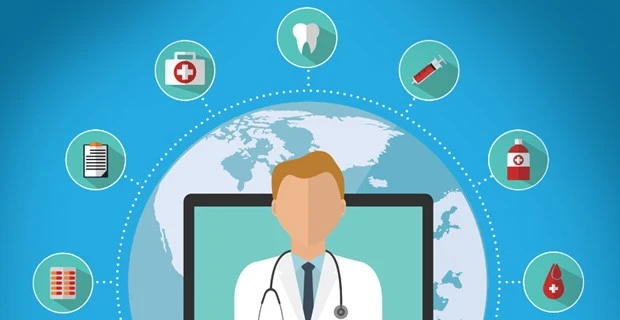Telemedicine has evolved from a niche service to a mainstream healthcare delivery model, driven by advances in technology, changes in regulatory frameworks, and shifting patient expectations. The COVID-19 pandemic accelerated its adoption, highlighting the critical role telemedicine plays in bridging gaps in healthcare access. This article delves into the emerging trends in telemedicine, examining how it is transforming healthcare delivery, the benefits and challenges it presents, and its potential to address disparities in healthcare access.
Contents
The Evolution of Telemedicine
Definition and Historical Context
Telemedicine refers to the use of telecommunication technologies to provide clinical healthcare services remotely. It encompasses a wide range of applications, from video consultations and remote monitoring to digital diagnostics and electronic health records (EHRs). While telemedicine has been around for decades, its integration into mainstream healthcare has accelerated in recent years.
Drivers of Telemedicine Adoption
Technological Advancements: The proliferation of smartphones, high-speed internet, and sophisticated medical devices has made telemedicine more accessible and effective.
Regulatory Changes: Regulatory bodies worldwide have adapted policies to support telemedicine, including reimbursement for virtual visits and cross-state licensure for healthcare providers.
Patient Demand: Patients increasingly seek convenient and flexible healthcare options, driving the demand for telemedicine services.
Emerging Trends in Telemedicine
1. Integration of Artificial Intelligence (AI) and Machine Learning (ML)
Enhancing Diagnostic Accuracy
AI and ML algorithms are being integrated into telemedicine platforms to enhance diagnostic accuracy and decision-making. These technologies can analyze vast amounts of data from EHRs, medical images, and wearable devices to identify patterns and provide clinical insights.
Personalizing Patient Care
AI-driven telemedicine solutions offer personalized treatment recommendations based on individual patient data, improving outcomes and patient satisfaction. For example, AI can assist in triaging patients, predicting disease progression, and recommending preventive measures.
2. Expansion of Remote Patient Monitoring (RPM)
Continuous Health Monitoring
RPM technologies enable continuous monitoring of patients’ vital signs, such as heart rate, blood pressure, and glucose levels, from the comfort of their homes. This is particularly beneficial for managing chronic conditions like diabetes, hypertension, and heart disease.
Reducing Hospital Readmissions
By providing real-time data to healthcare providers, RPM can detect early signs of deterioration and prompt timely interventions, reducing hospital readmissions and improving patient outcomes.
3. Telehealth Platforms and Mobile Health (mHealth) Apps
Convenience and Accessibility
Telehealth platforms and mHealth apps provide patients with easy access to healthcare services through their smartphones and computers. These platforms offer various services, including virtual consultations, appointment scheduling, prescription refills, and mental health support.
Empowering Patients
mHealth apps empower patients to take an active role in their healthcare by providing tools for medication management, health tracking, and education. This fosters greater patient engagement and adherence to treatment plans.
4. Virtual Reality (VR) and Augmented Reality (AR) in Telemedicine
Innovative Treatment Modalities
VR and AR technologies are being explored for various telemedicine applications, including pain management, physical therapy, and mental health treatment. VR can create immersive environments for pain relief and rehabilitation, while AR can assist in remote surgical guidance and training.
Enhancing Patient Experience
These technologies enhance the patient experience by providing interactive and engaging ways to receive treatment and education. For instance, VR can be used for cognitive behavioral therapy (CBT) to treat anxiety and PTSD.
5. Blockchain for Secure Data Management
Ensuring Data Privacy and Security
Blockchain technology offers a secure and transparent way to manage patient data in telemedicine. It can ensure the integrity and privacy of health records, facilitate data sharing among healthcare providers, and prevent unauthorized access.
Streamlining Administrative Processes
Blockchain can streamline administrative processes, such as billing and claims processing, by providing a tamper-proof record of transactions and reducing the risk of fraud.
Benefits of Telemedicine
1. Increased Access to Healthcare
Reaching Underserved Populations
Telemedicine extends healthcare services to rural and underserved areas where access to healthcare providers is limited. It bridges the gap by connecting patients with specialists and primary care providers remotely.
Convenient Access for Patients
Patients can access healthcare services without the need to travel, take time off work, or arrange childcare, making healthcare more convenient and accessible.
2. Cost Savings
Reducing Healthcare Costs
Telemedicine can reduce healthcare costs by minimizing the need for in-person visits, hospital admissions, and emergency room visits. It also lowers overhead costs for healthcare facilities.
Improving Efficiency
Telemedicine improves the efficiency of healthcare delivery by reducing wait times, streamlining workflows, and enabling faster diagnosis and treatment.
3. Improved Patient Outcomes
Timely Interventions
Remote monitoring and virtual consultations enable timely interventions, preventing complications and improving patient outcomes. Early detection and management of health issues lead to better health outcomes.
Enhanced Chronic Disease Management
Telemedicine facilitates continuous management of chronic diseases, allowing healthcare providers to monitor patients’ conditions closely and adjust treatment plans as needed.
Challenges and Considerations
1. Digital Divide and Health Equity
Addressing Access Disparities
Despite its potential, telemedicine can exacerbate health disparities if not implemented equitably. Ensuring that all patients have access to the necessary technology and internet connectivity is crucial.
Educating Patients and Providers
Educating patients and healthcare providers about telemedicine and its benefits is essential for widespread adoption. Training programs and support resources can help bridge the digital divide.
2. Data Privacy and Security
Protecting Sensitive Information
The use of telemedicine raises concerns about data privacy and security. Healthcare providers must implement robust security measures to protect patient data from cyber threats and breaches.
Compliance with Regulations
Telemedicine providers must comply with regulations such as the Health Insurance Portability and Accountability Act (HIPAA) in the United States and the General Data Protection Regulation (GDPR) in Europe to ensure data privacy and security.
3. Reimbursement and Legal Issues
Navigating Reimbursement Policies
Reimbursement for telemedicine services varies by region and insurance provider. Clear and consistent reimbursement policies are needed to encourage the adoption of telemedicine.
Addressing Legal and Regulatory Barriers
Legal and regulatory barriers, such as licensure requirements and cross-state practice restrictions, must be addressed to facilitate the seamless delivery of telemedicine services.
Future Directions and Opportunities
1. Integration with Traditional Healthcare Systems
Hybrid Care Models
The future of healthcare will likely involve hybrid care models that combine in-person and virtual care. Integrating telemedicine with traditional healthcare systems ensures continuity of care and improves patient outcomes.
Interoperability and Data Integration
Developing interoperable systems that allow seamless data exchange between telemedicine platforms and EHRs is crucial for comprehensive patient care. Interoperability enhances care coordination and data accuracy.
2. Advancements in Telemedicine Technologies
AI and Predictive Analytics
The integration of AI and predictive analytics into telemedicine platforms will enable more accurate diagnoses, personalized treatment plans, and proactive healthcare management.
Wearable Devices and IoT
Wearable devices and the Internet of Things (IoT) will play a significant role in telemedicine by providing continuous health monitoring and real-time data to healthcare providers.
3. Global Expansion and Collaboration
Telemedicine in Developing Countries
Telemedicine has the potential to revolutionize healthcare delivery in developing countries by overcoming geographical barriers and resource constraints. International collaboration and investment can drive telemedicine adoption globally.
Cross-Border Telemedicine
Cross-border telemedicine can facilitate access to specialized healthcare services, allowing patients to receive expert consultations and second opinions from healthcare providers worldwide.
Telemedicine is transforming healthcare delivery by bridging gaps in access, improving patient outcomes, and reducing healthcare costs. Emerging trends such as AI integration, remote patient monitoring, and the use of VR and blockchain are driving innovation in telemedicine. However, challenges related to the digital divide, data privacy, and regulatory barriers must be addressed to ensure equitable access and secure implementation of telemedicine services.
As technology continues to advance and healthcare systems adapt, telemedicine will play an increasingly vital role in providing accessible, efficient, and personalized healthcare. By embracing these emerging trends and addressing the associated challenges, telemedicine has the potential to revolutionize healthcare delivery and create a more inclusive and effective healthcare system for all.


